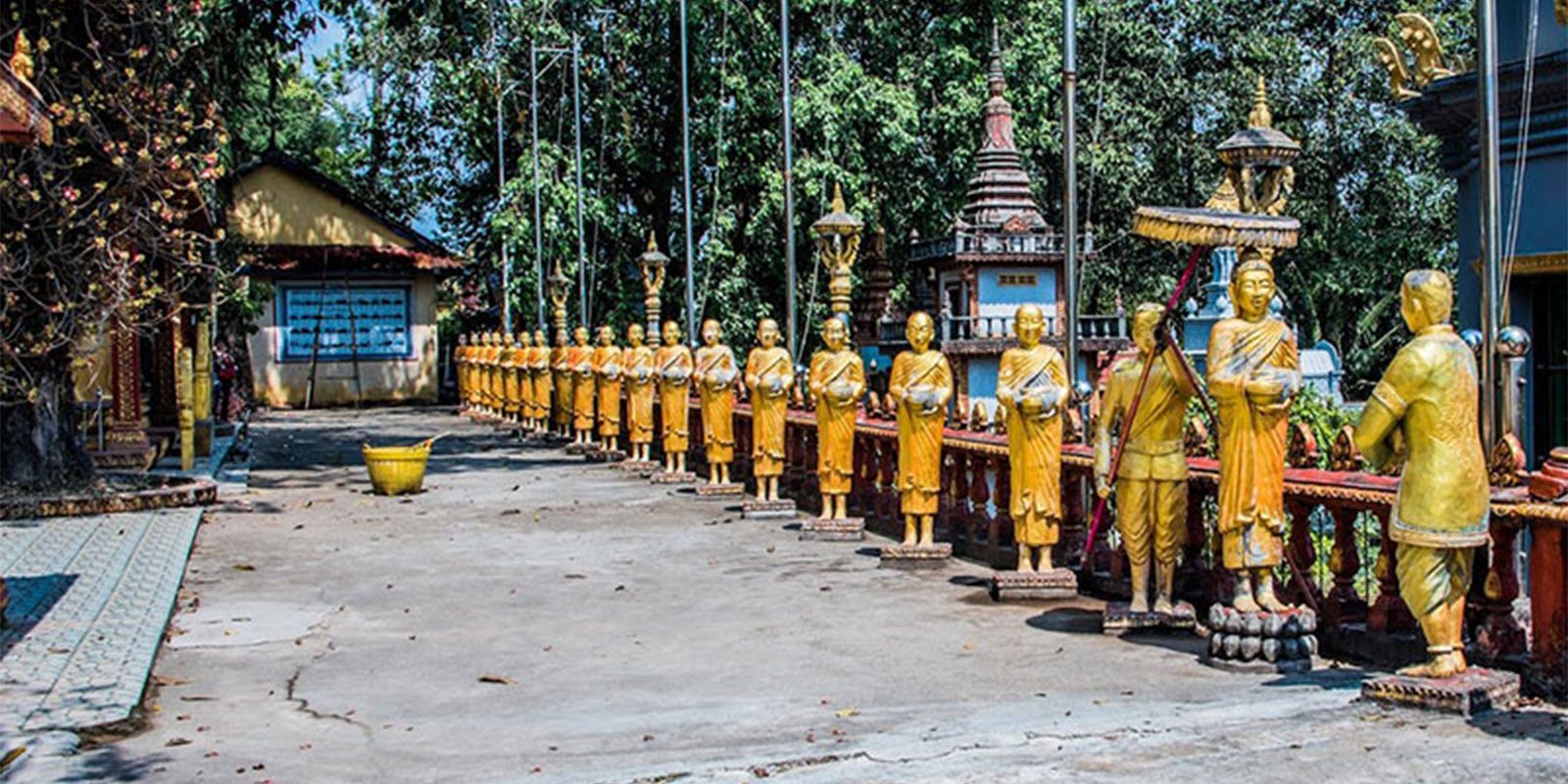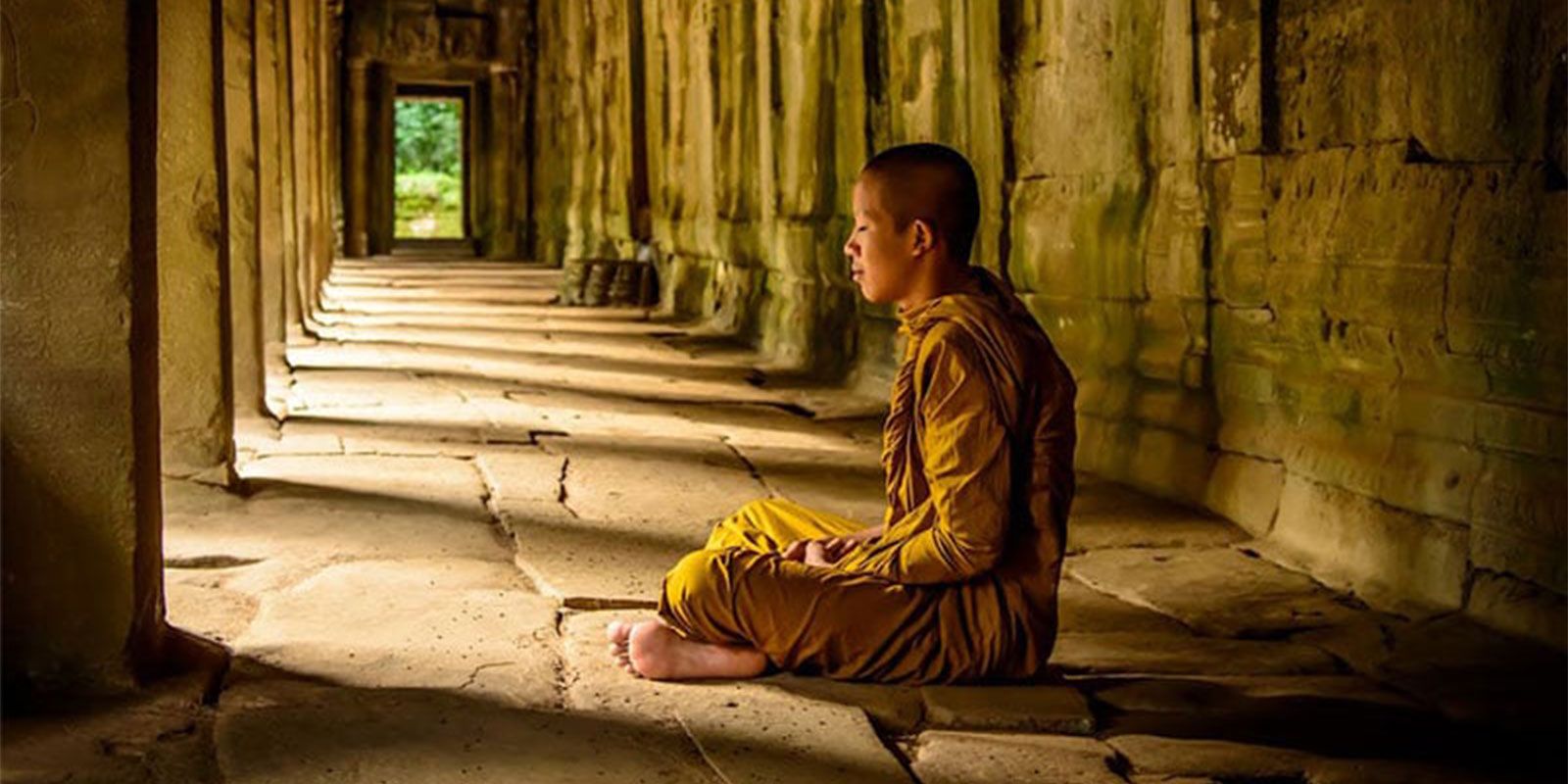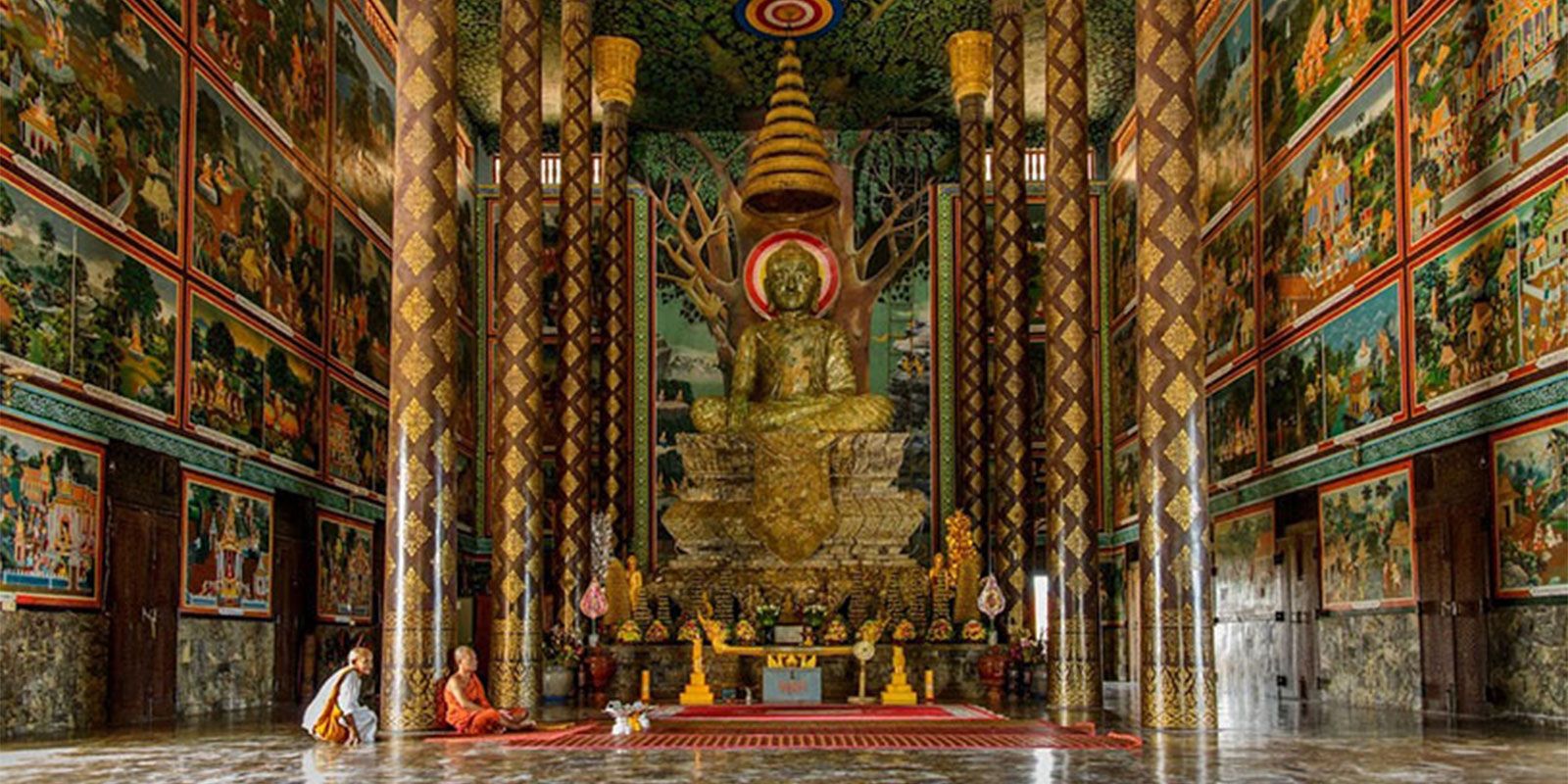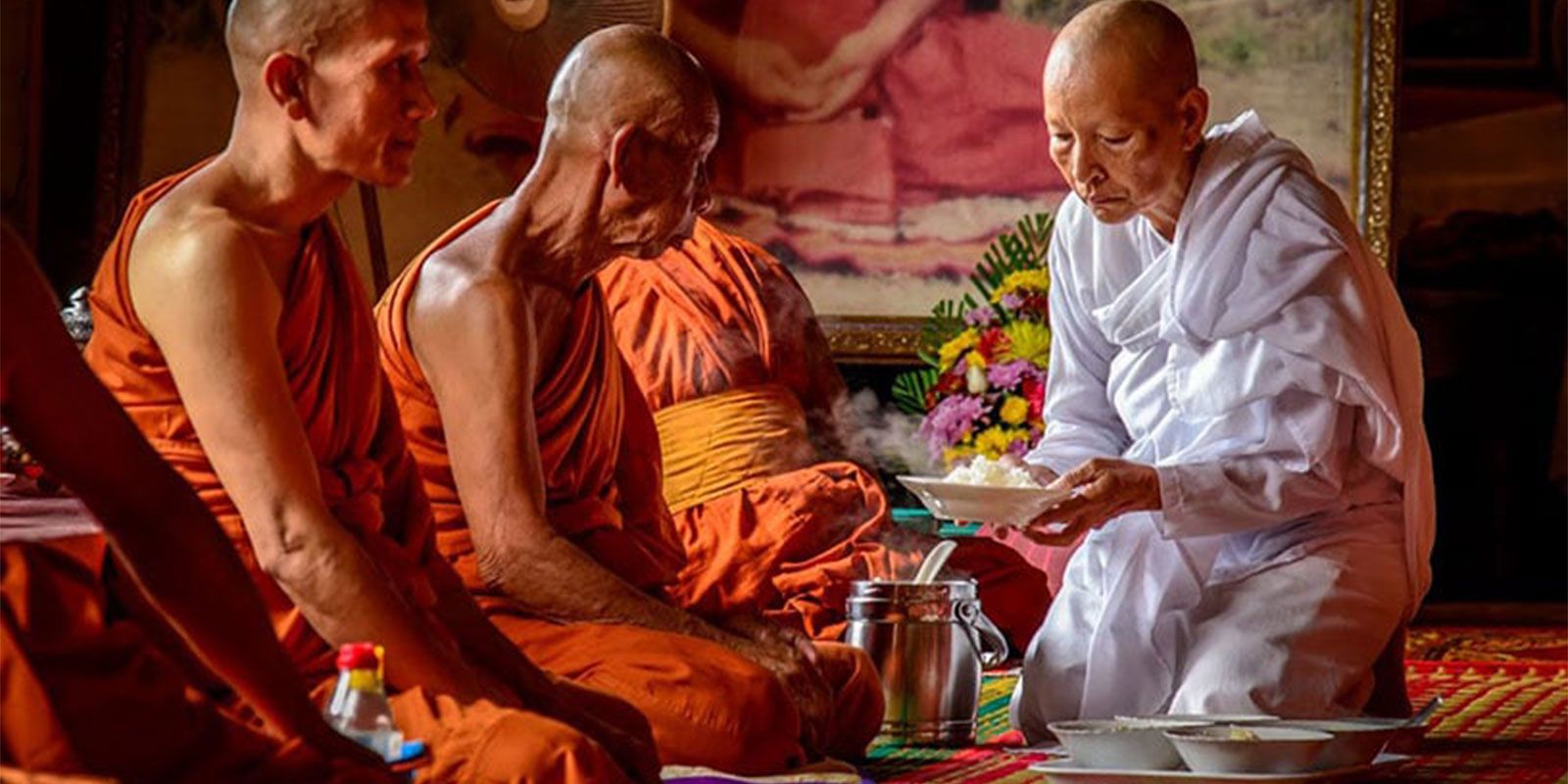The Cambodia Buddhism
Buddhism has been in Cambodia since the 5th century. Nowadays, more than 95% of Cambodians are Buddhists (Mahayana Buddhism). Buddhism was established as the national religion in the constitution in 1993, as such, the majority of the population practice Buddhism. This blog you will learn a short insight into Cambodia Buddhism.

The history of Buddha
Buddha’s name is Gautama (Siddhattha in Pali), the son of king Sodhaddana and the mother Siri Mahamaya. Gautama was born in Nepal (previously North India) in the 6th century BC. Five days after his birth, the King asked 108 scholars to predict Gautama’s future. Eight of the best scholars were chosen to predict two choices for Gautama; he would either become a King or Buddha. However, the youngest of the scholars proclaimed that there is only one choice that Gautama must be enlightened as Buddha. The King questioned the prediction and the scholars said it was the result of Guatama seeing four things in his life; old people, sick people, death and cleric. After receiving this information, the King attempted to prepare the Royal Palace so that his son would not witness these things.
7 days after his birth, his mother passed away and he grew up with an adopted mother named Paja Patigotami. Gautama grew up very protected and ended up marrying his wife, Yasodhara Bimba. One day by accident, Gautama went outside the palace and encountered the four things he had never witnessed before and found out from a servant about his whole story. When he finally understood, he realized that he had not witnessed the fourth aspect, the cleric. He wanted to explore these pillars and truly understand his predictions. At 29 years old and on the same day that his wife gave birth to their son, Rahula Kumar, he prepared to leave the palace at midnight.
Enlightenment
After encountering the four pillars; old age, sickness, death and the cleric, it pushed Gautama to leave his old life behind, including his wife and son, and travel with 5 scholars to help Gautama reach enlightenment. As part of his journey, Gautama began to eat less and less. After 6 years of self-discovery he had still not reached enlightenment and was in a poor condition, getting skinnier and skinnier, unhealthy and unable to walk. He realized that his severity in his attempt had not helped but rather was too much. As such, Gautama started eating properly again and joined the monks to receive food from the people. However, the 5 scholars that were helping Gautama on his journey were angry as he broke the rules they thought that it would lead him to enlightenment. Gautama began meditating under the buddhi tree. After 49 days of deep meditation, Gautama saw his past lives, his former births, the circle of life, good and evil and he had finally reached enlightenment and became a Buddha at 35 years of age.

After he reached enlightenment, he found the five scholars that attempted to help on his journey in order to teach the process. The first teaching is about the wheel of suffering, cause and pain. To restrain from all of these sufferings, we follow eight practices from the truth of life called Eightfold path: Right View, Right Conduct, Right Speech, Right Action, Right Livelihood, Right Effort, Right Mindfulness and Right Concentration.
These eight rights are the middle path in part of a threefold study where Wisdom found in the Right View and Right Conduct while Right speech, Right action and Right livelihood consists in Morality Practice as well as we learn to concentrate by observing the Right Effort, Right Mindfulness and Right Concentration.
The Rule of Buddhist Monk
Six rules that monk has to give, share and advice to people:
- Not to commit evil
- Practise gratitude
- Giving people a pure Heart
- Leading people to the right path
- Encourage people to be more positive
- Showing the way to live life in peace and harmony
What does the monk do every day?
There are many pagodas in Cambodia located in various places such as in the city, rural areas, floating villages or high land areas due to the various locations, the activities of the monks also vary. Generally, monks get up at 4 am in the morning and go pagoda to respect and to recall a favor to the Buddha and then practice chanting the Dharma until 5 am or 6 am (depending on the pagoda).
From 6 to 8 am, the monks go to the village with the arm bowl walking through the villages and ask for the offerings, then the monks come back and have breakfast.
After that, the monks have class in the pagoda. The monks study the same as high school students, but they also have 4 different subjects such as Bali, Sanskrit, monk’s discipline, and comparrison religion. Between 10 am to 2 pm is the time for lunch and rest. They have class again from 2 to 5 pm, except for the holiday, finish the activity at 5:00 PM. Monks are often invited to the villagers’ house to conduct culture ceremonies.
Before Phnom Penh became a city, monks were not allowed to study outside because they might not want to be monks forever. However, as they are viewed as a human resource for the country, the scholars decided to allow monks to study at university outside their normal activity hours.

The Rule of the Pagoda
Previously, a pagoda was called “Kot” which means the accommodation for a holy man in other to study or acquire knowledge. The Pagoda is a place where people gather together for storytelling, maintain the Tripitaka culture, civilization, literature, art etc.
In short, the pagoda is a place to practice and spread out the Tripitaka (the lessons from Buddha’s enlightenment) and it is also a center of learning, helping, and sharing for the society.

People and the Pagoda
Buddhism cannot maintain without monks and layman and laywoman. Practicing Buddhism is very important in Cambodia, especially during ceremonies such as “Khmer New Year” or “Pchum Ben Day”, where people go to the Pagoda to offer food to the monks in order for them to transfer the food to their ancestors. In addition, there is a holy day every week and every month where the monks and the laymen and laywomen gather together at Preah Vihea to recall a favor to the Buddha and chant the Dharma in two shifts, during the morning from 4-6 am and during the evening from 6-8 pm.
Travel Articles
Read the local stories, and get travel advice from our Travel Specialist. We have lived through our experience and wanted to bring first hands-on exploration through the local insider.
